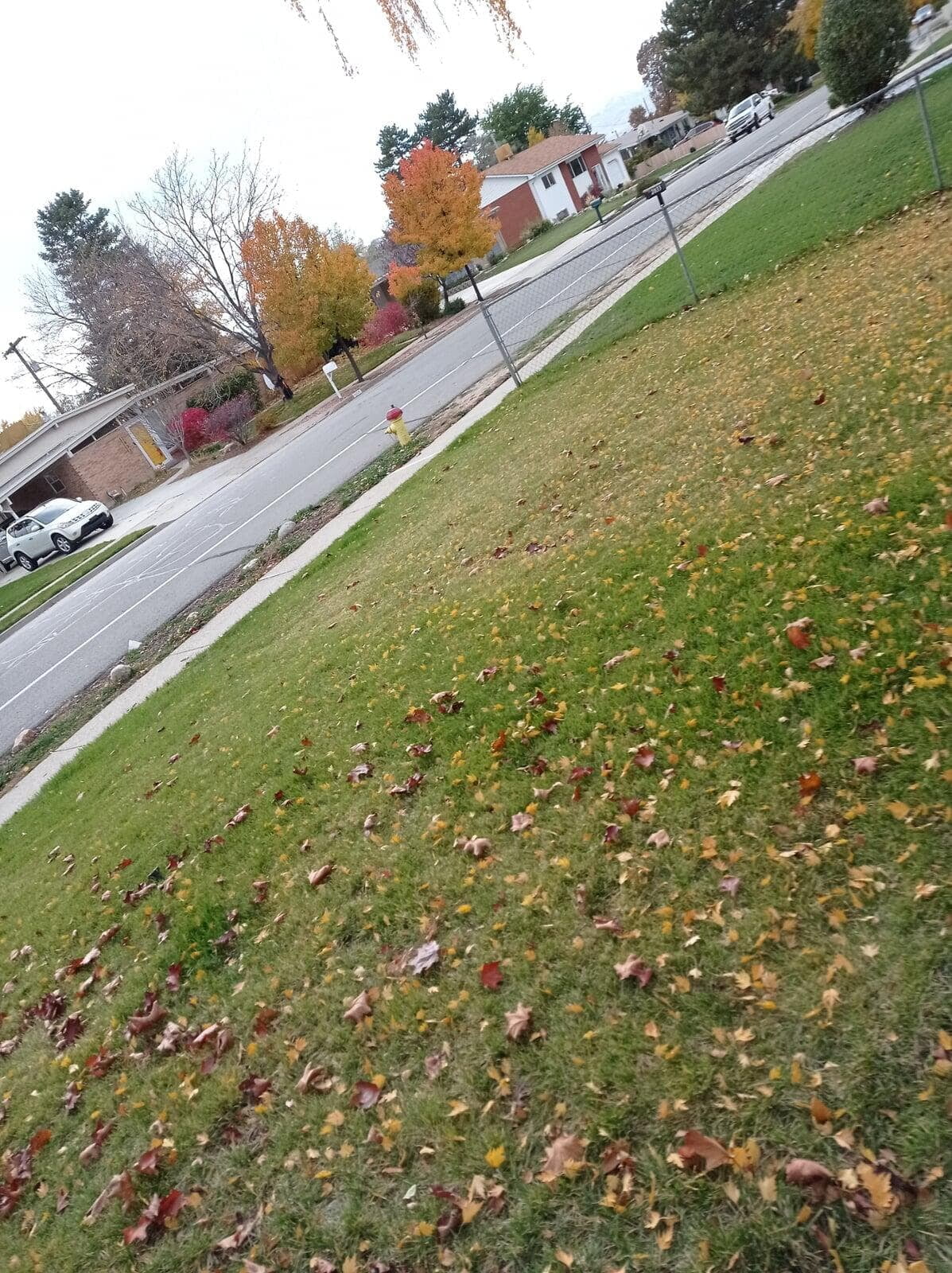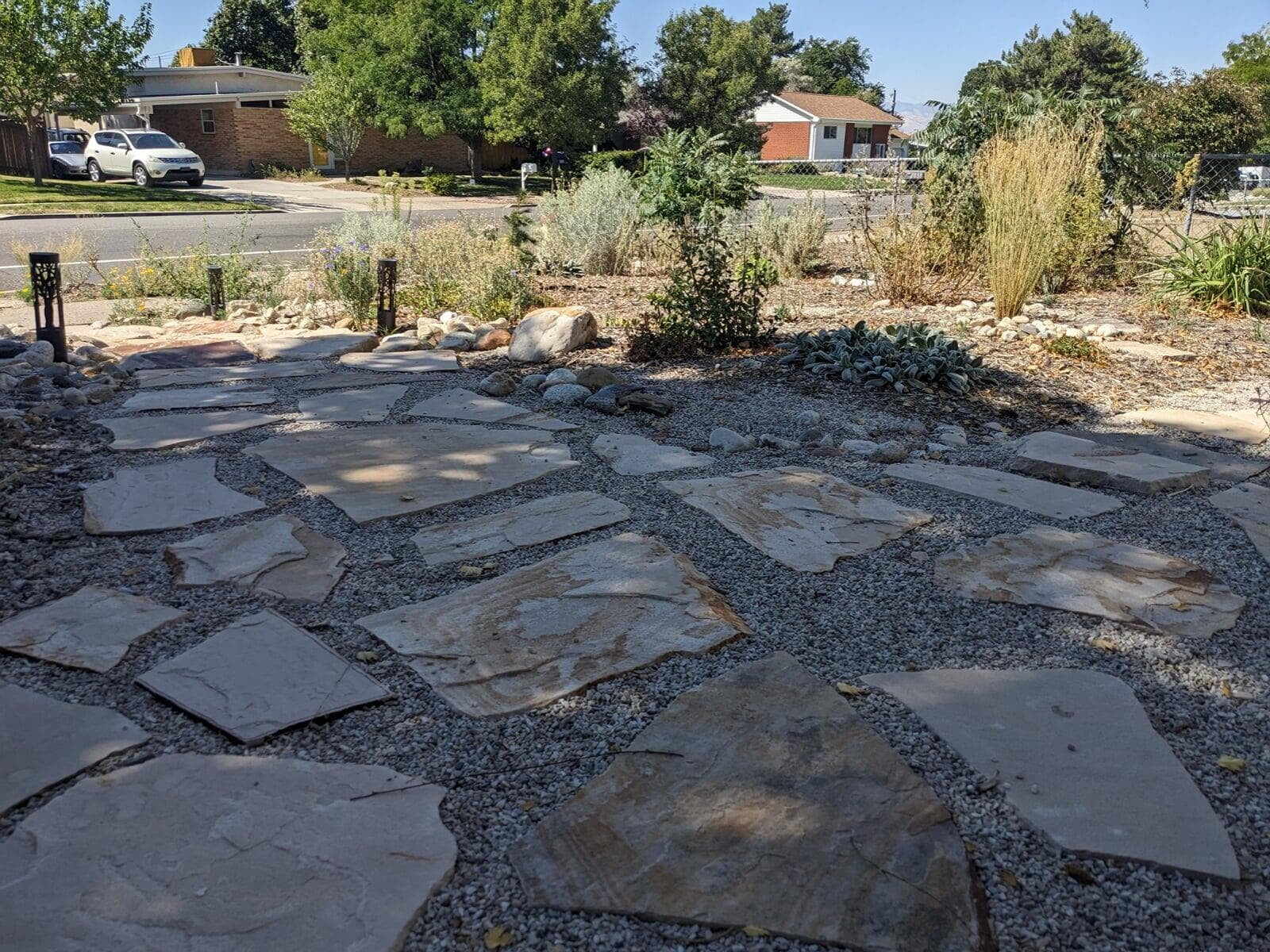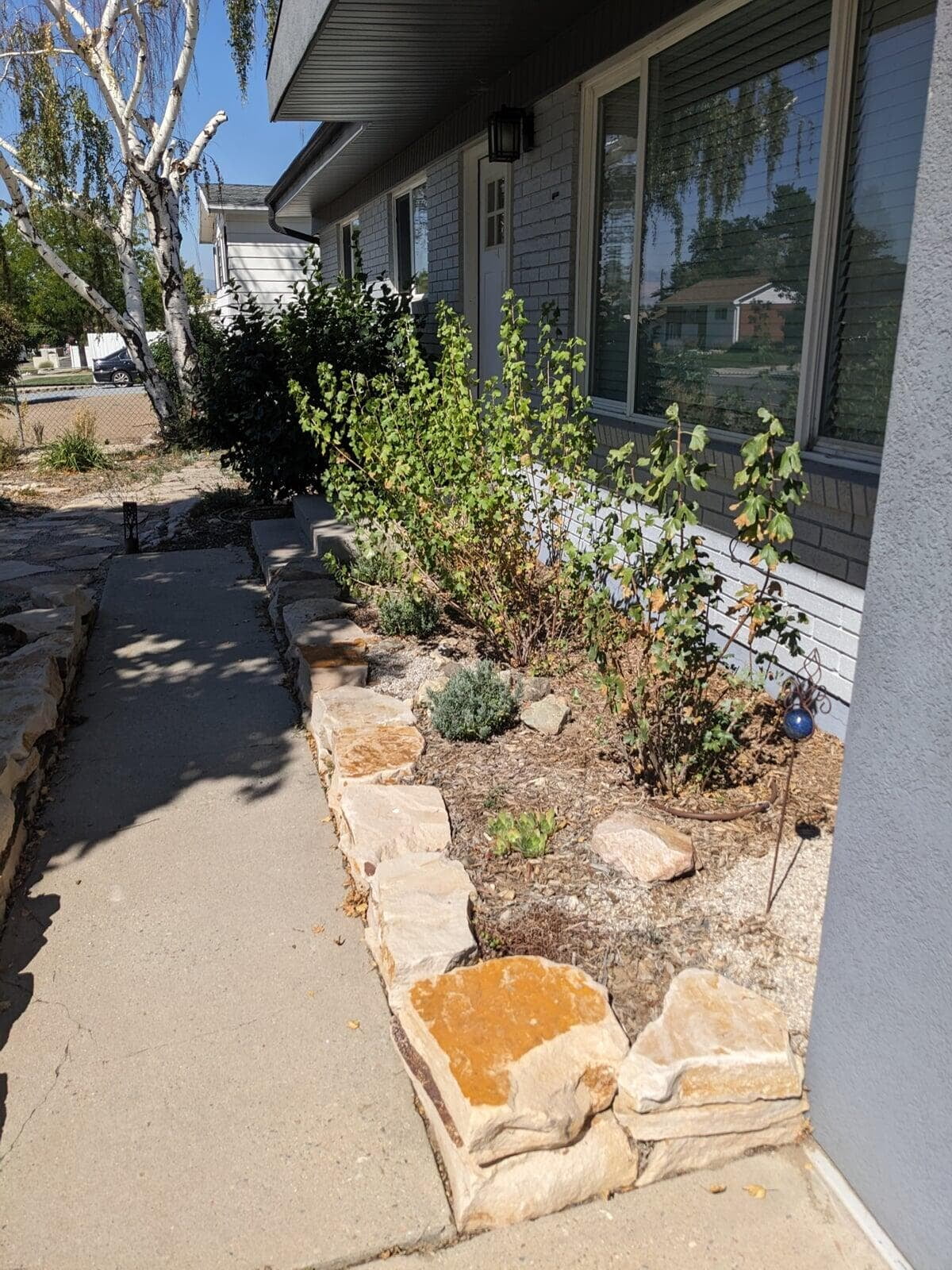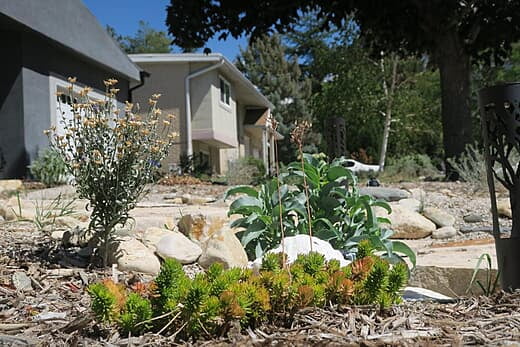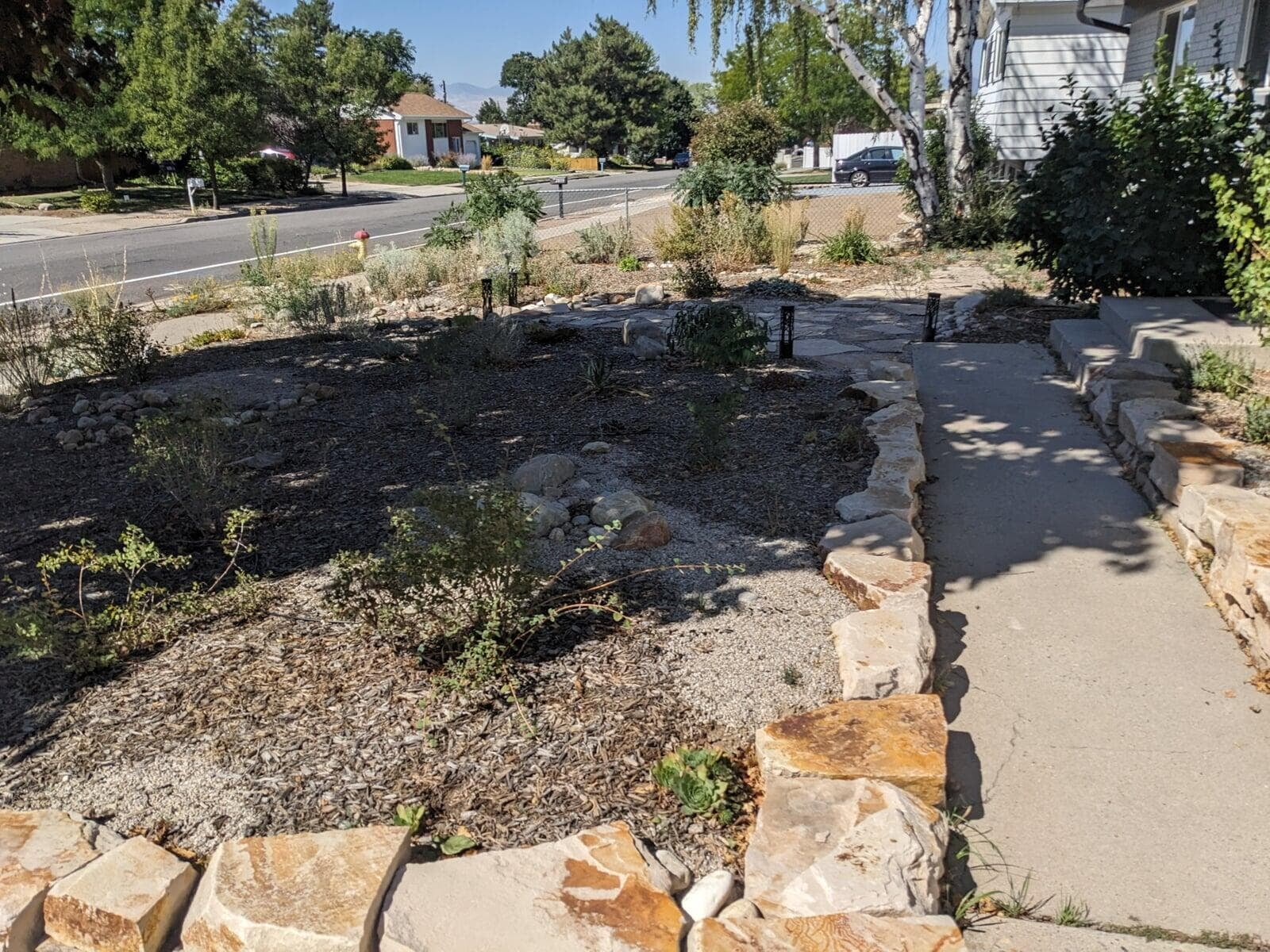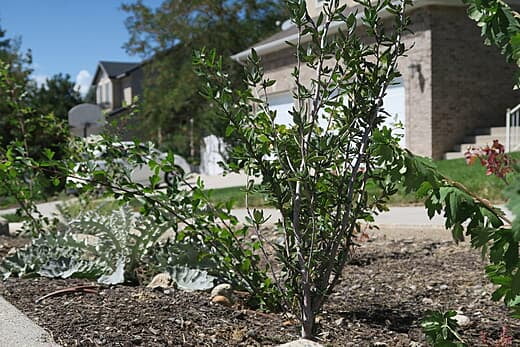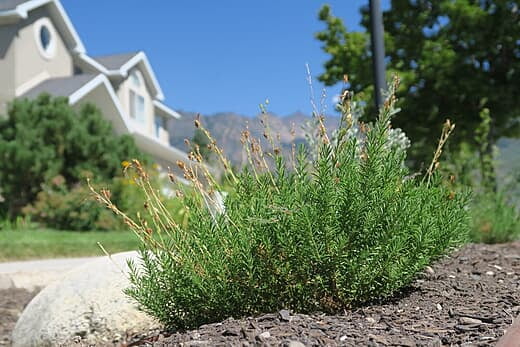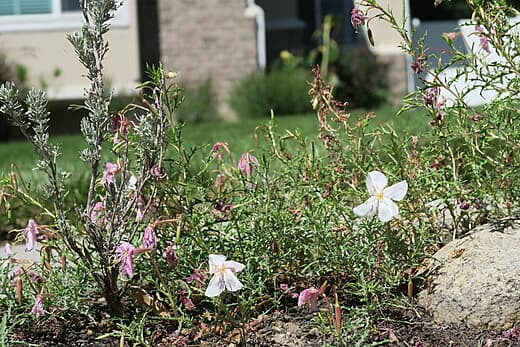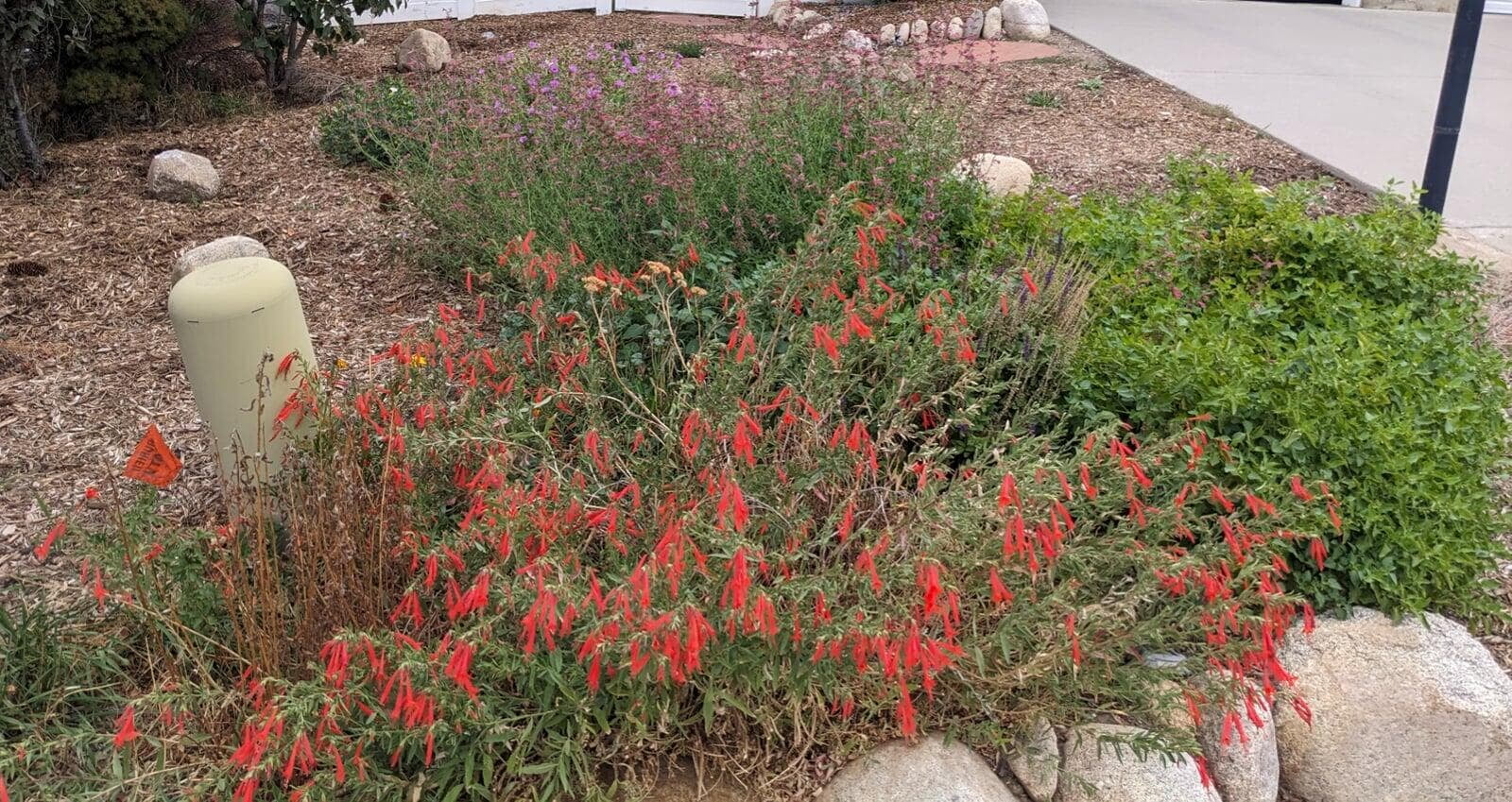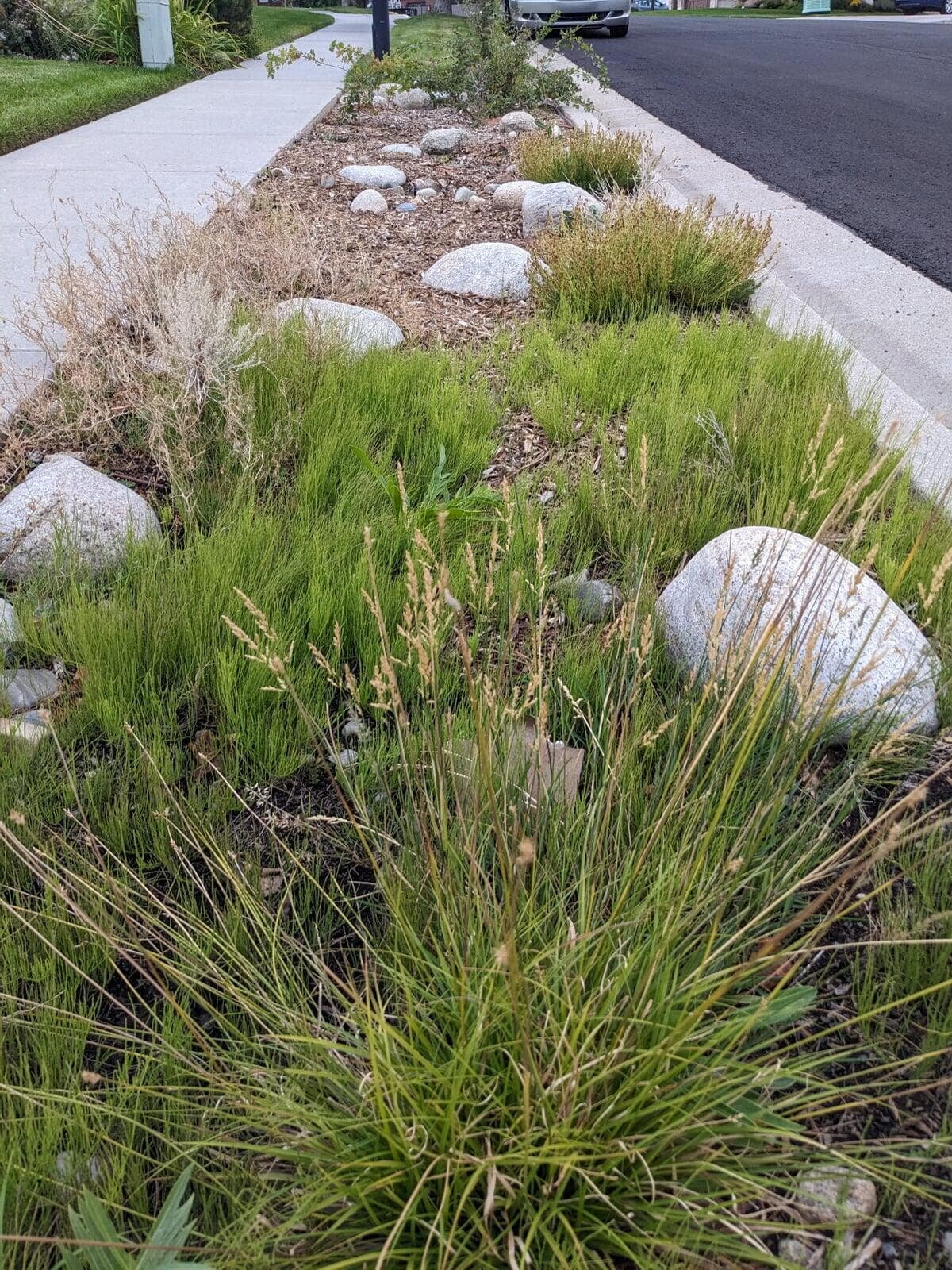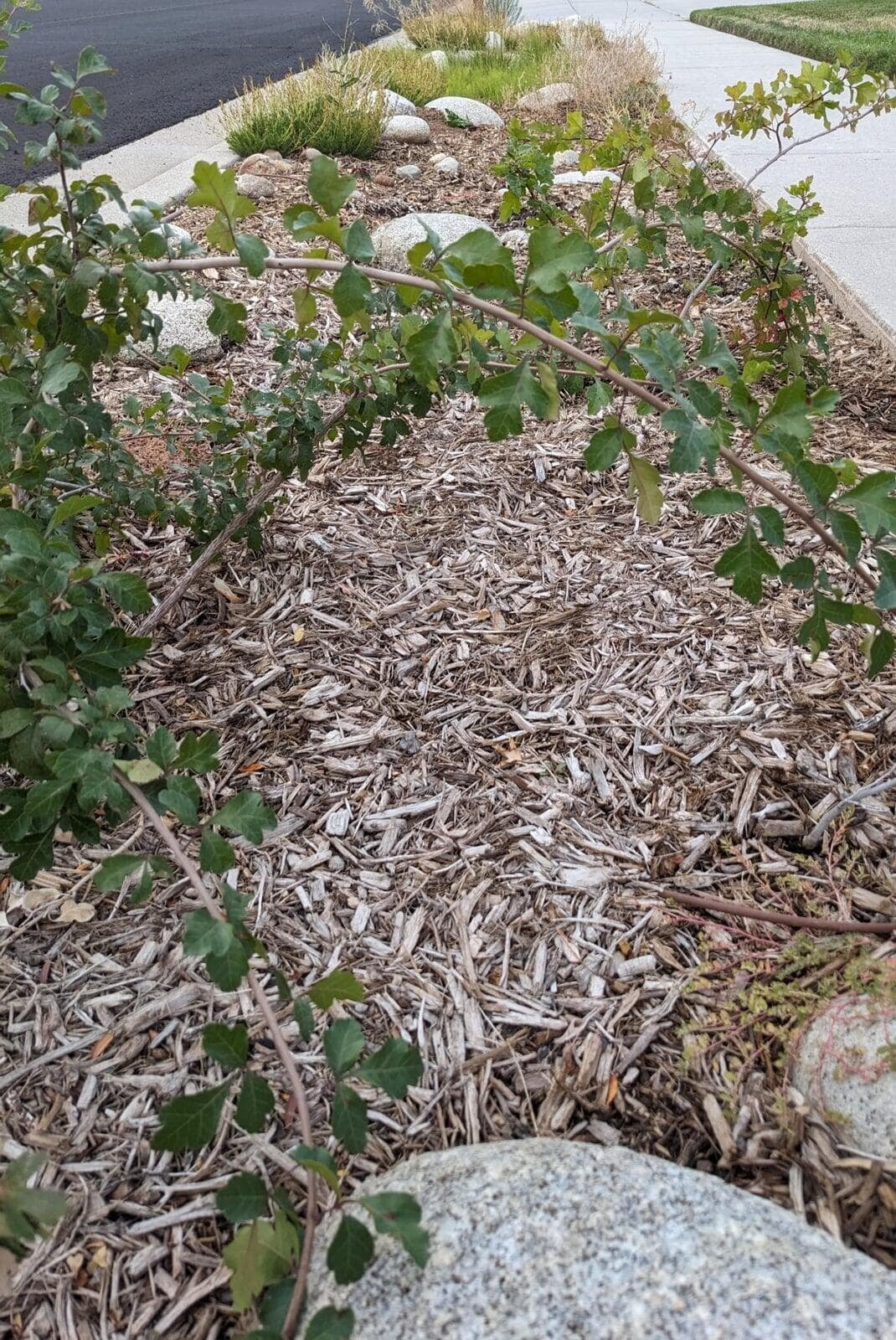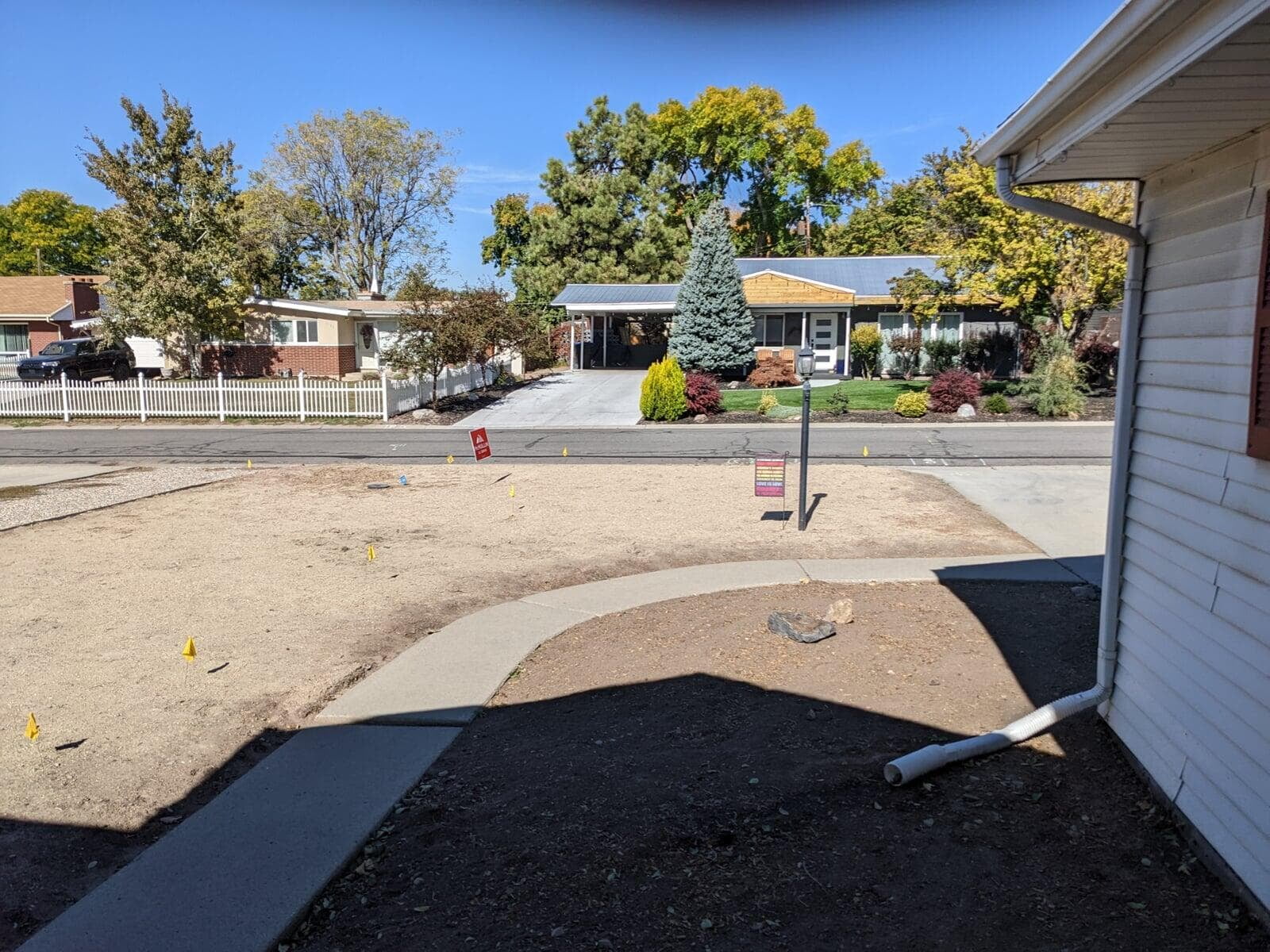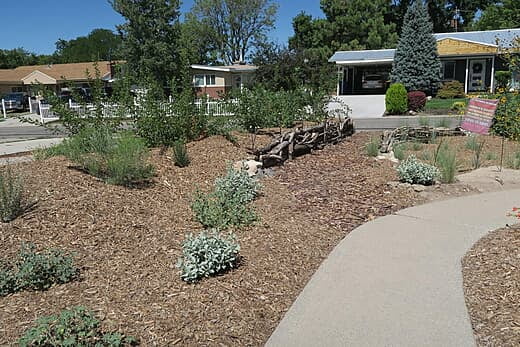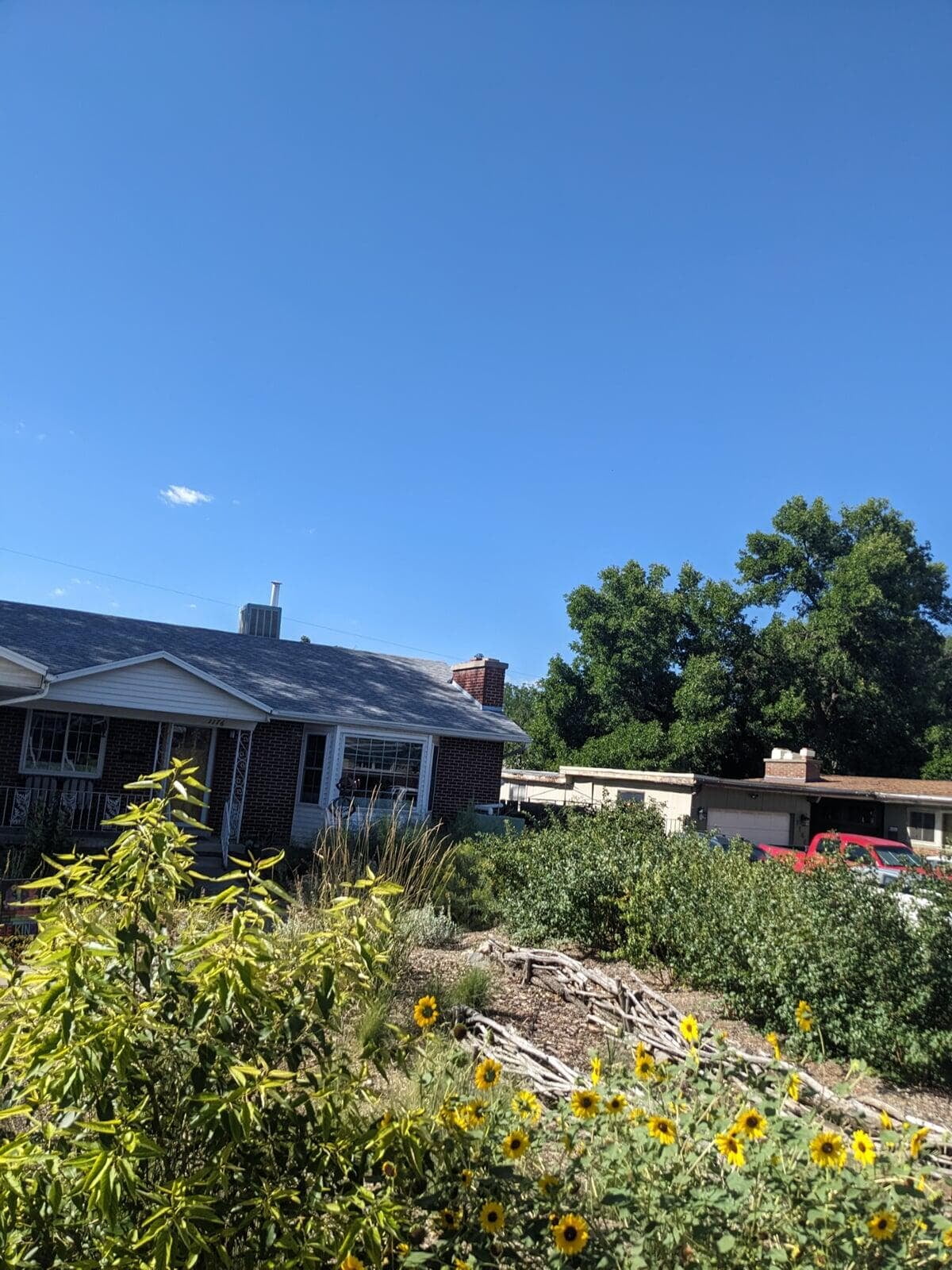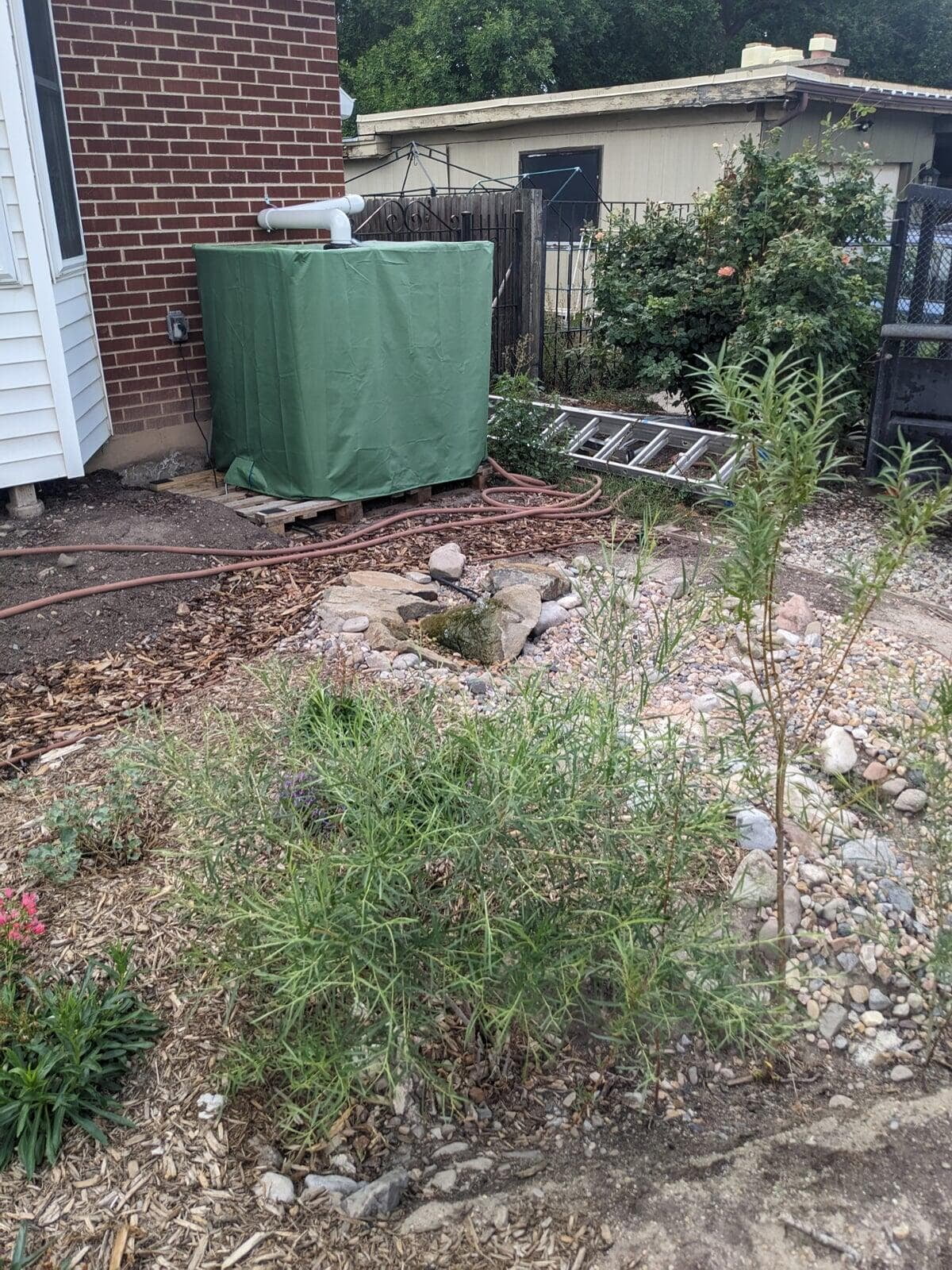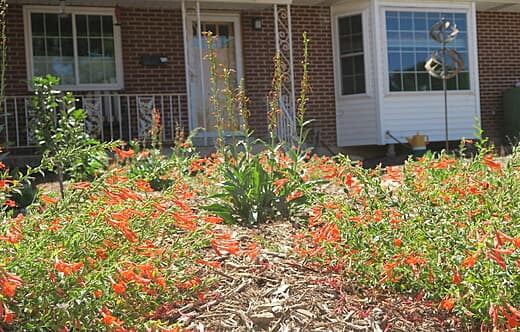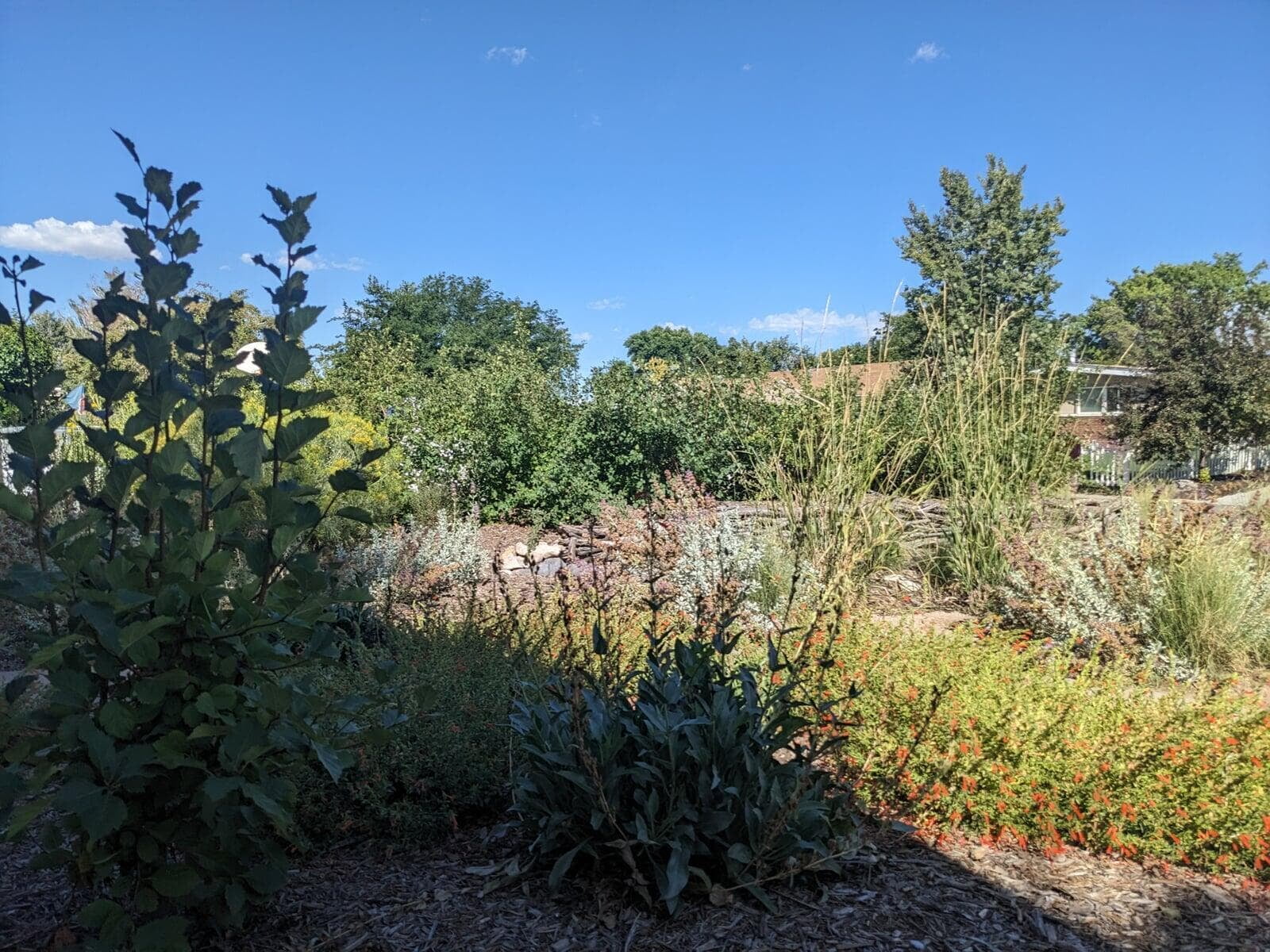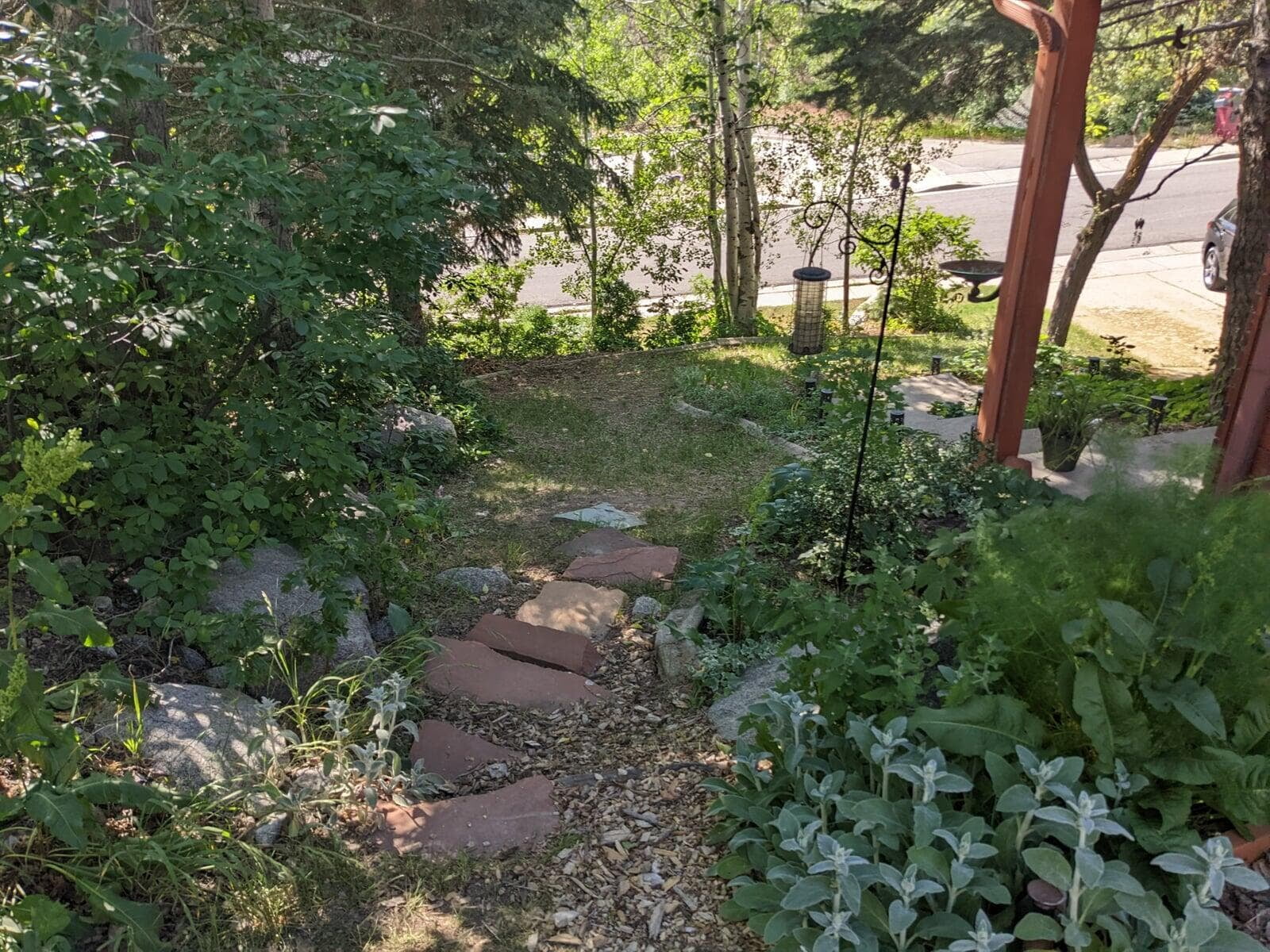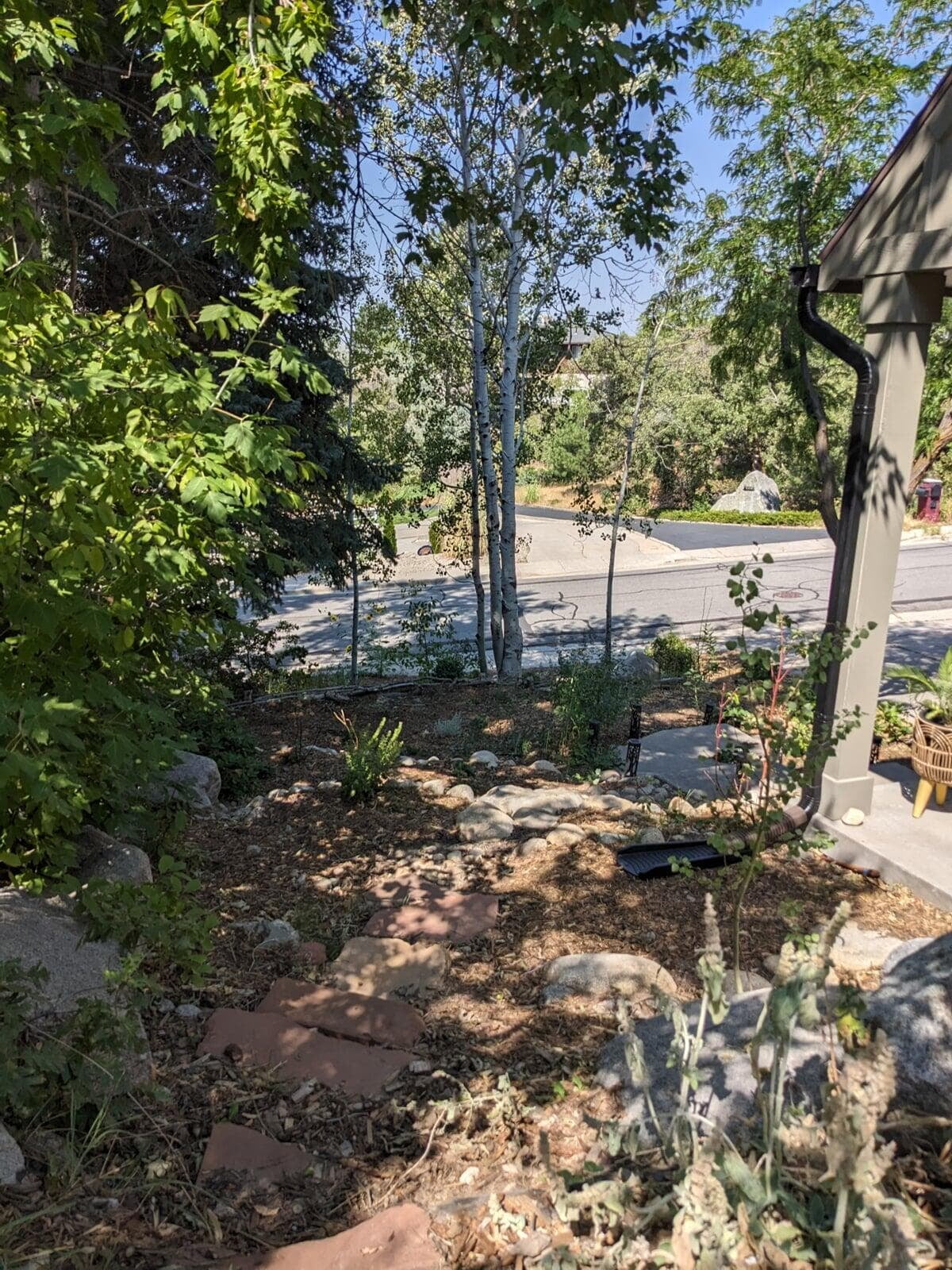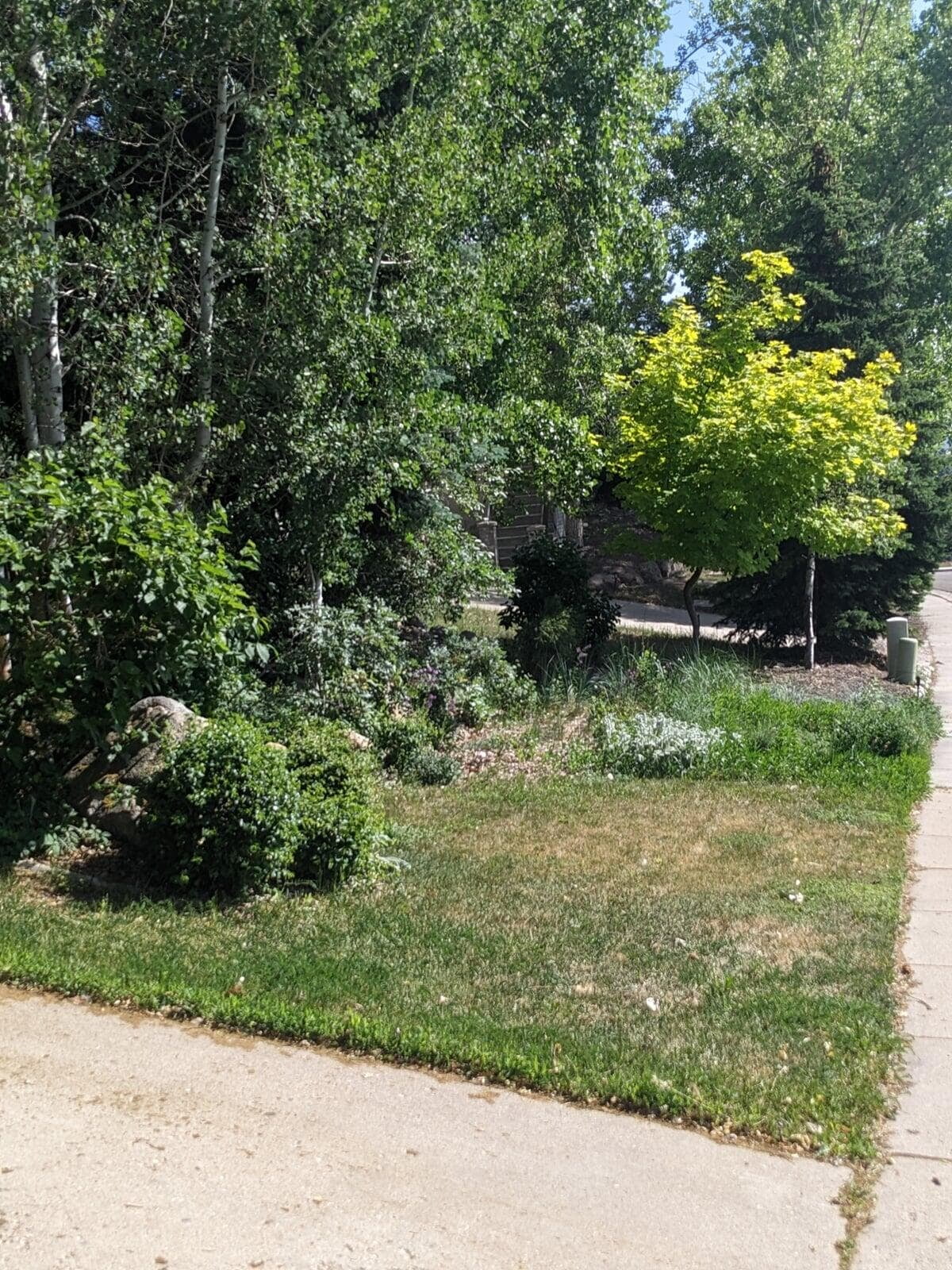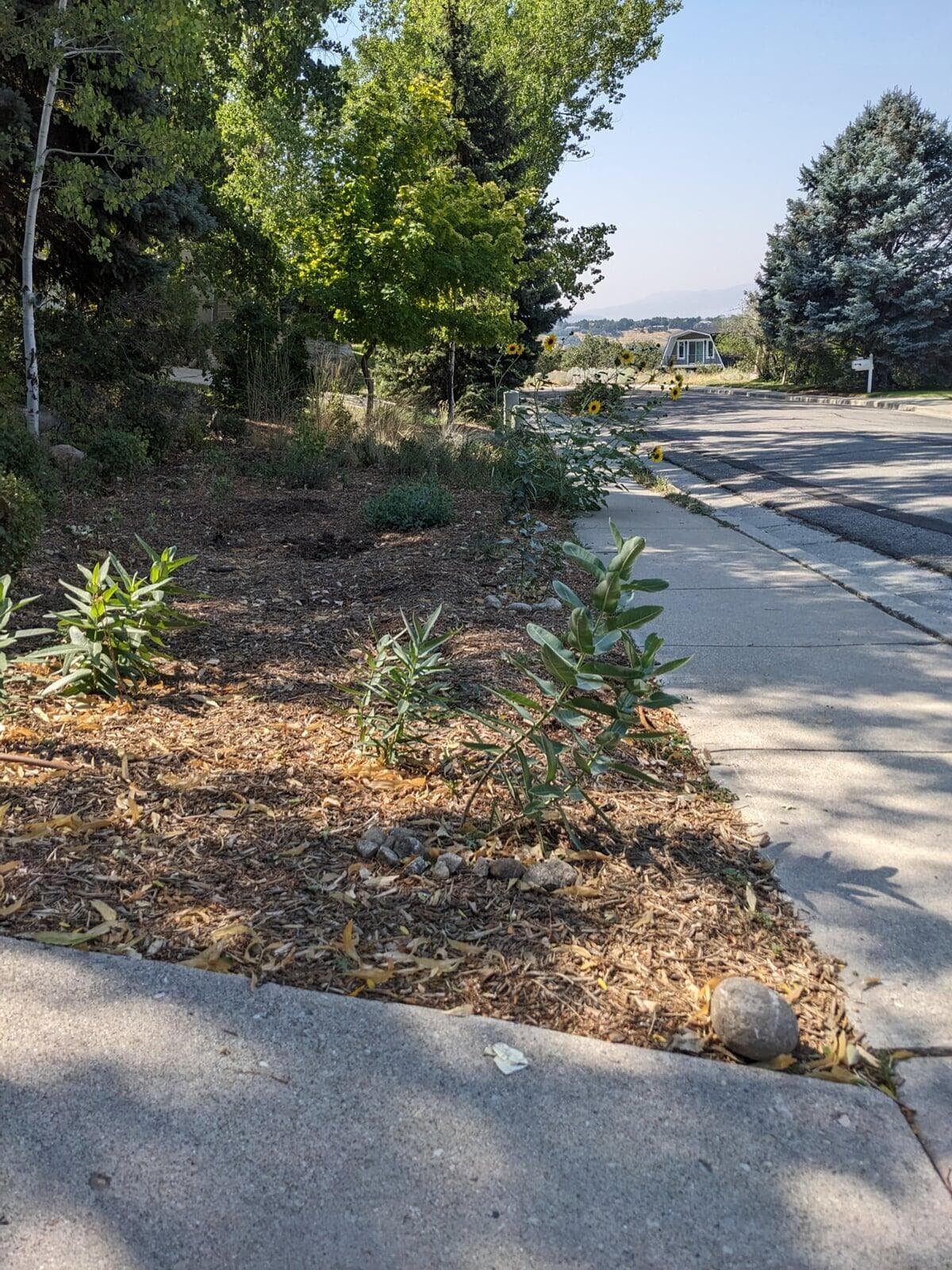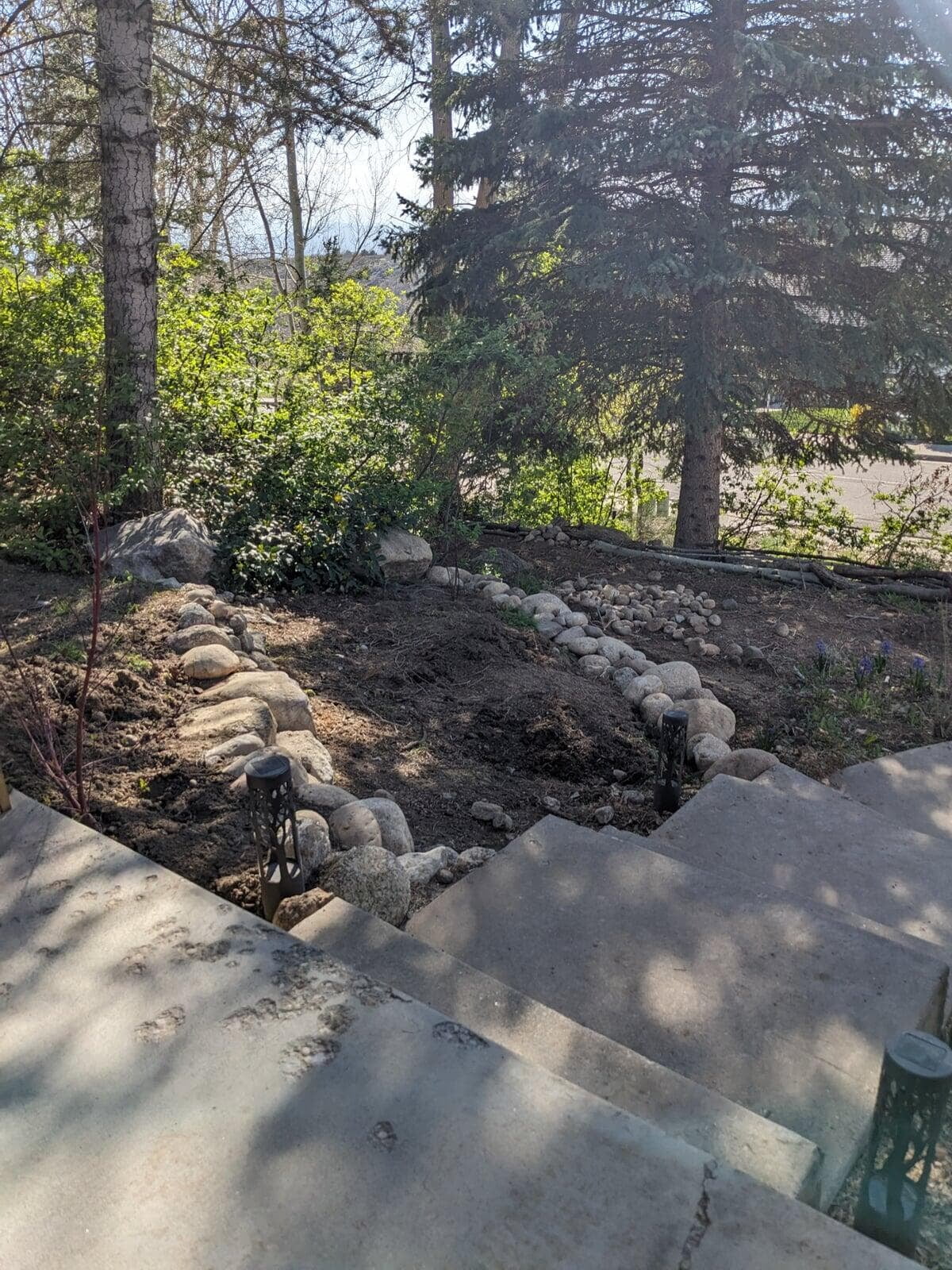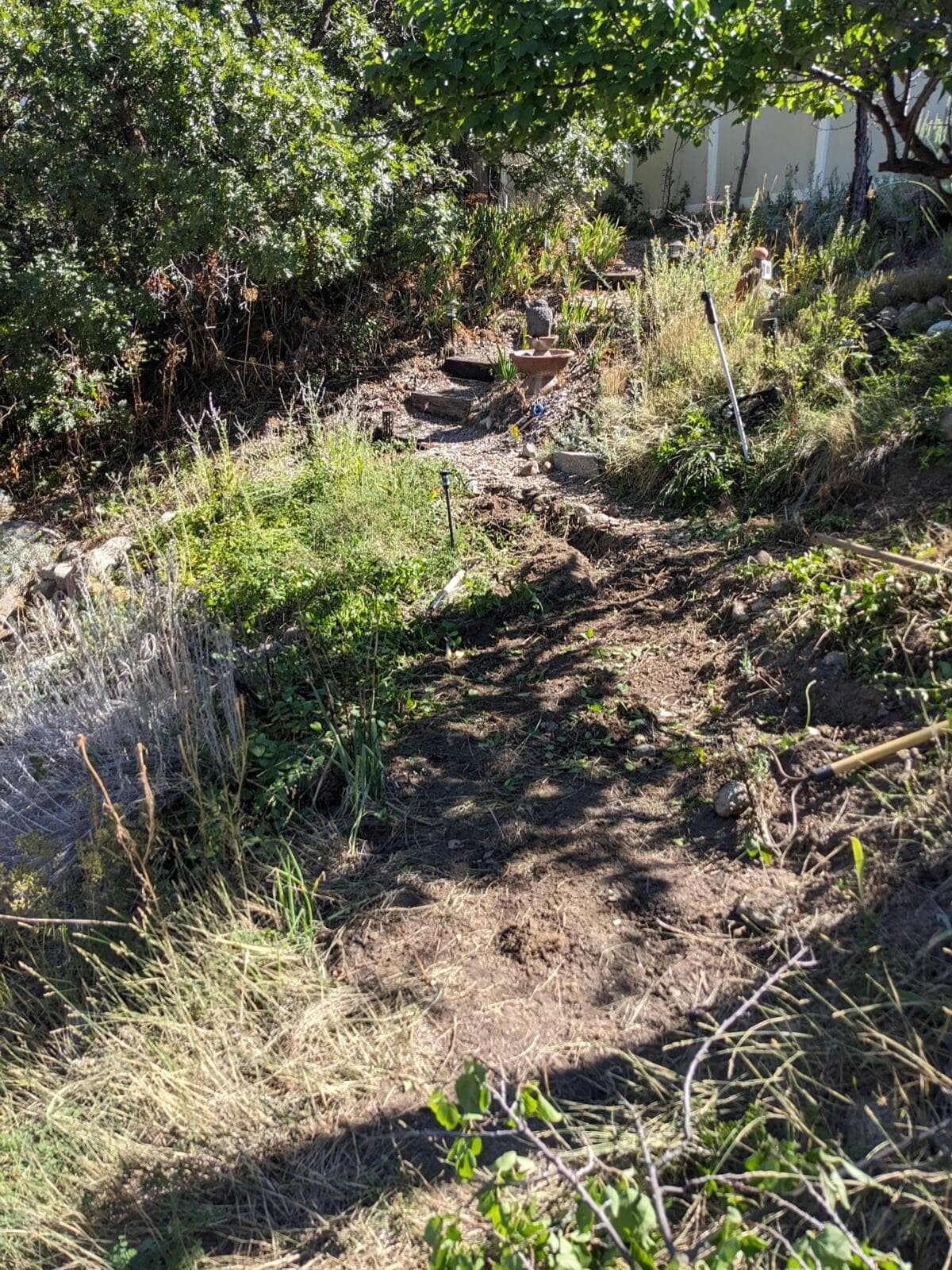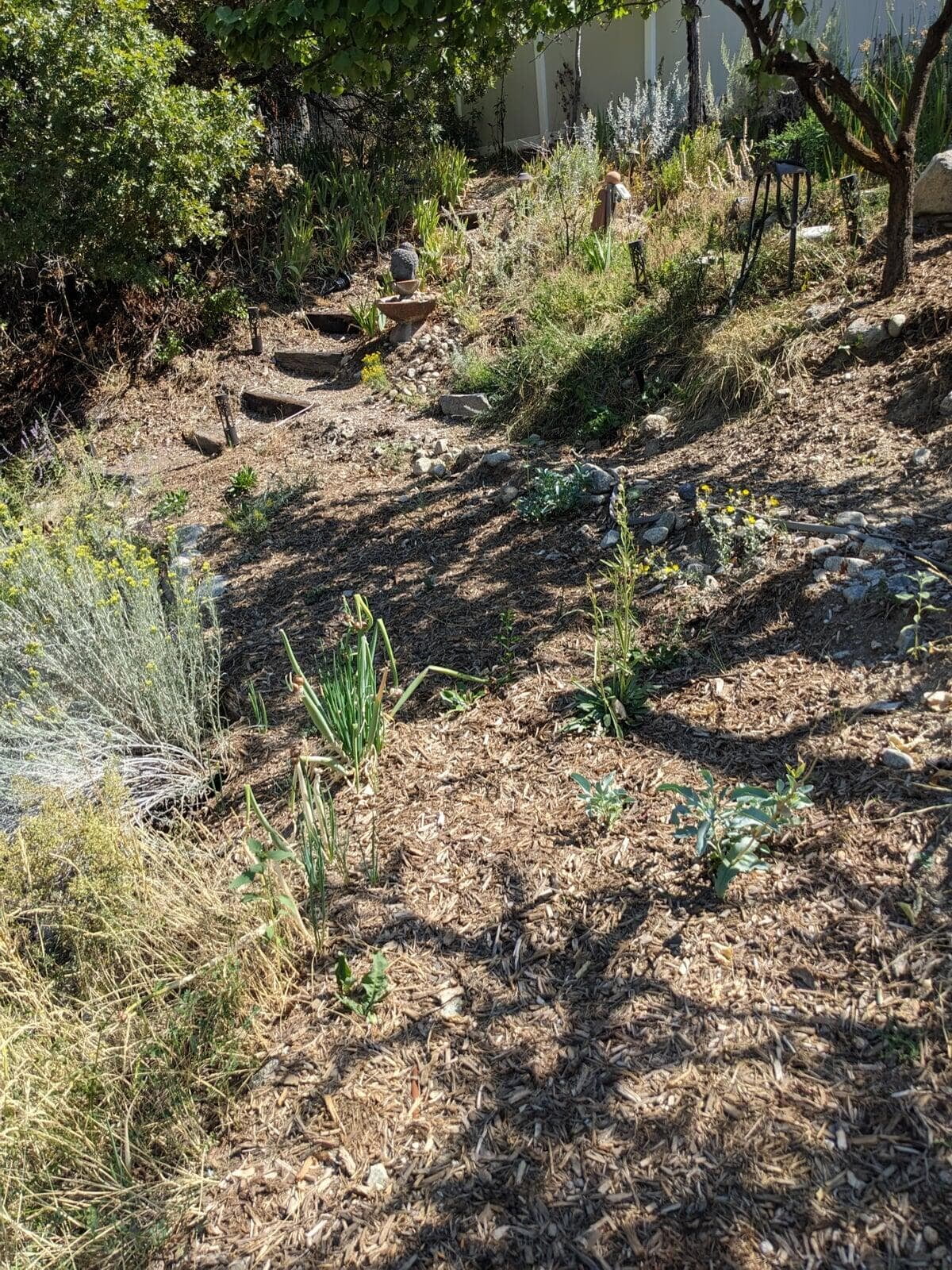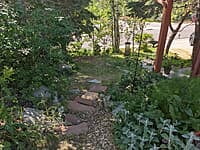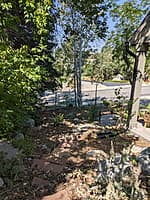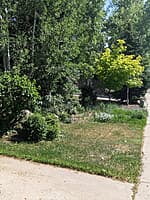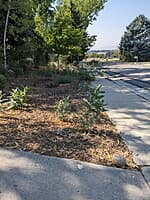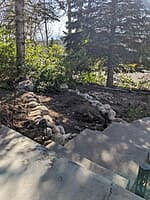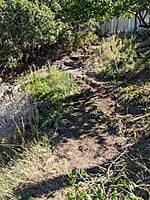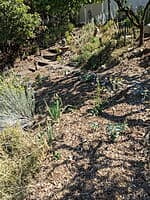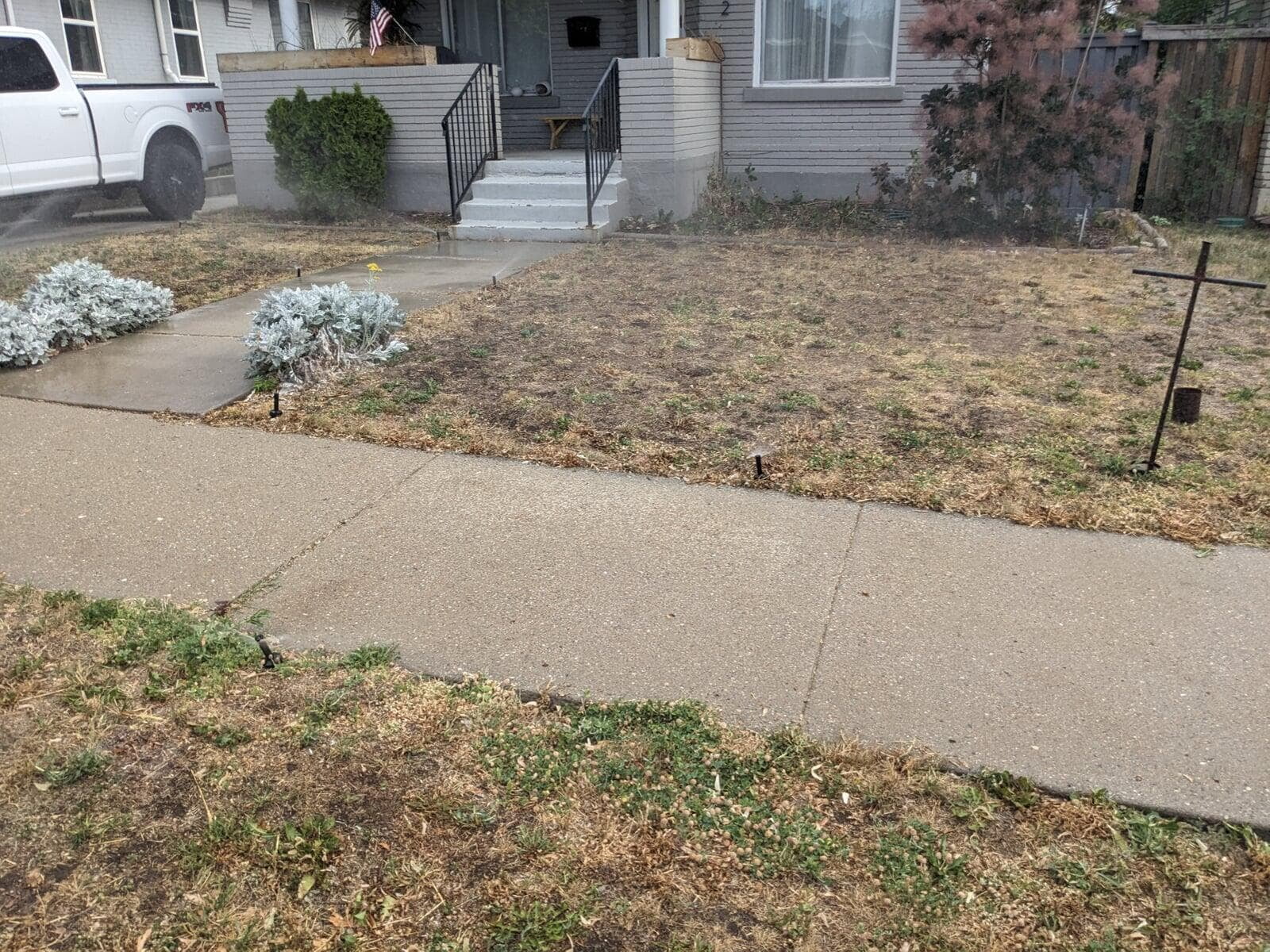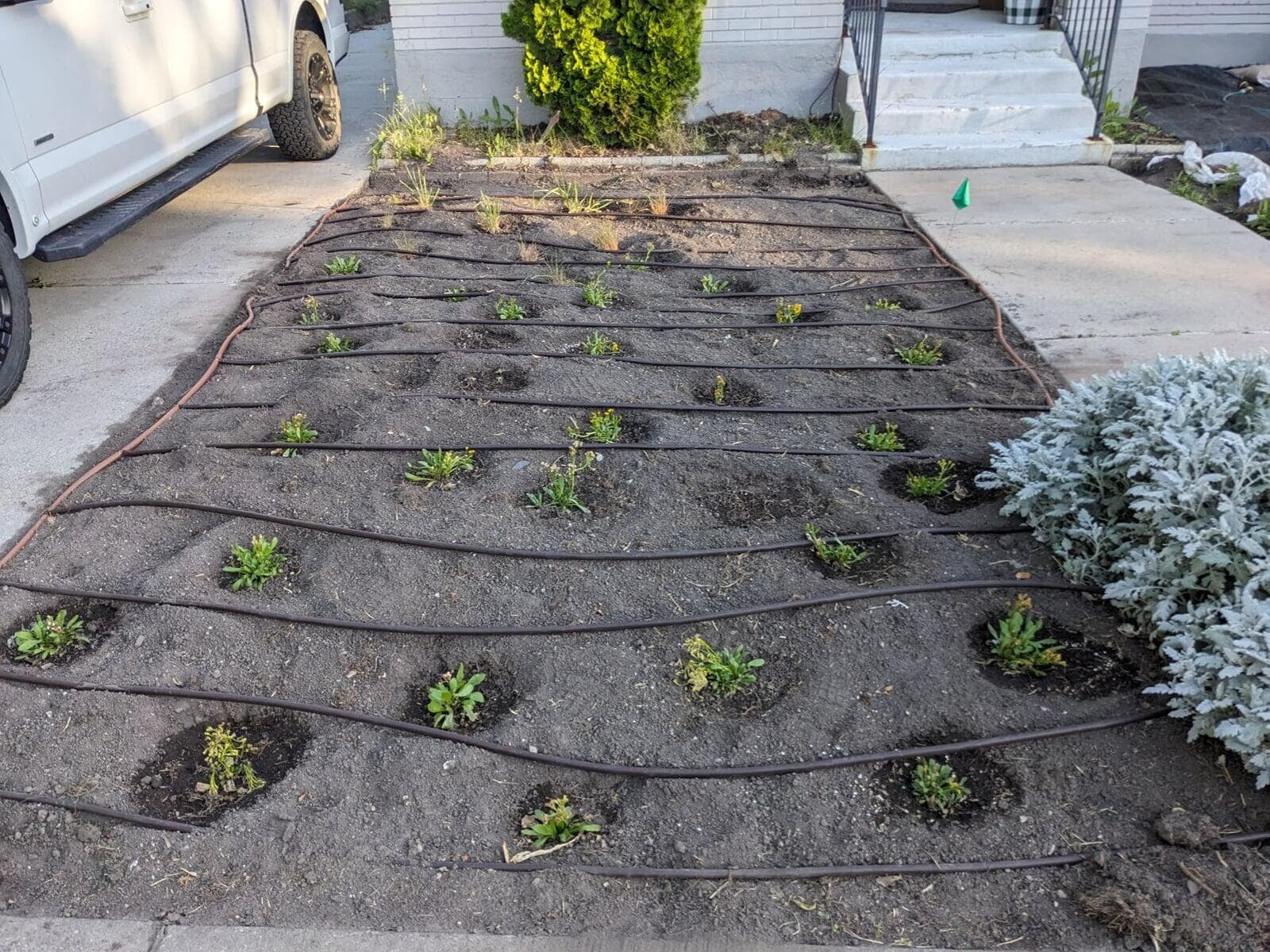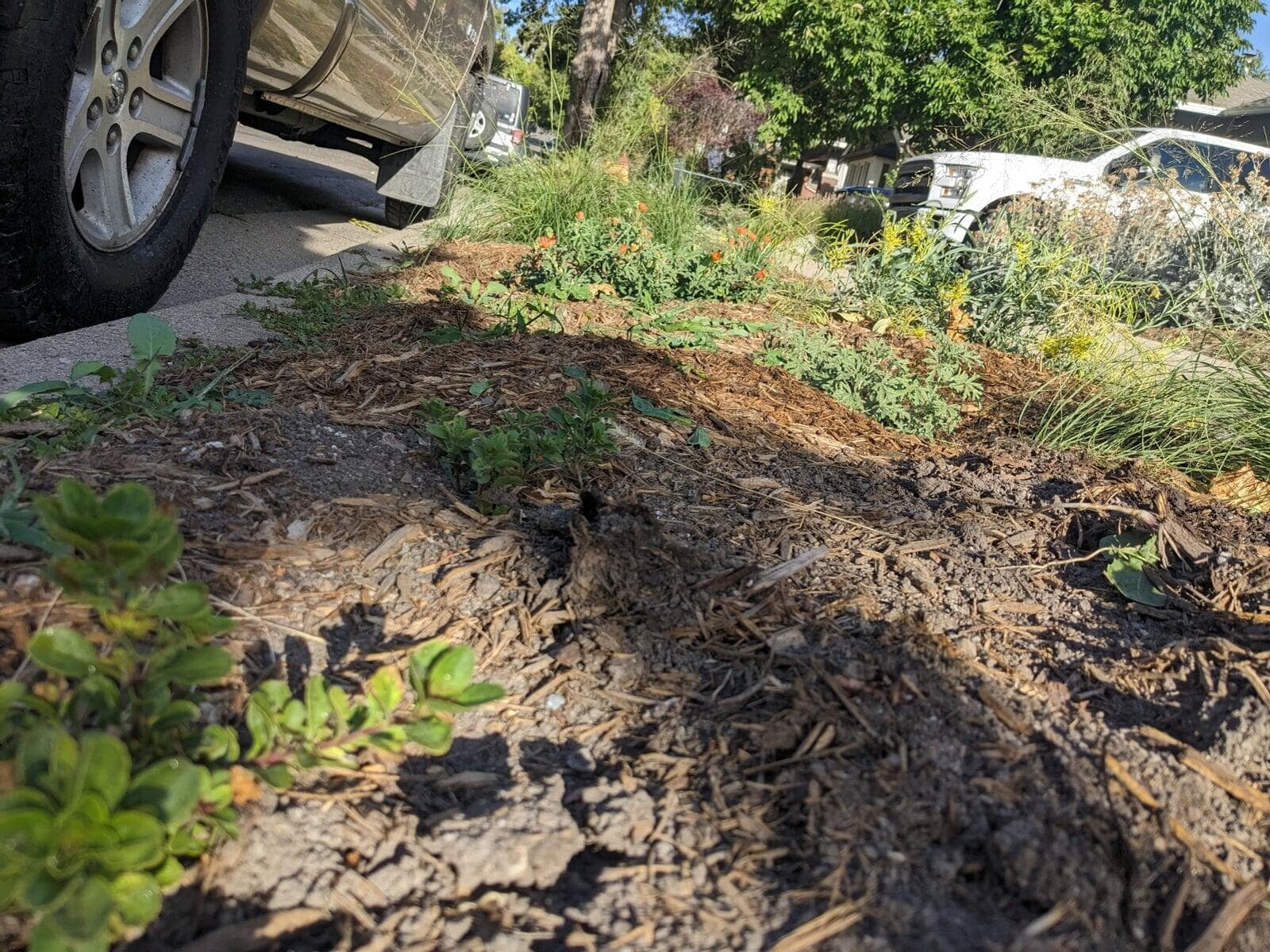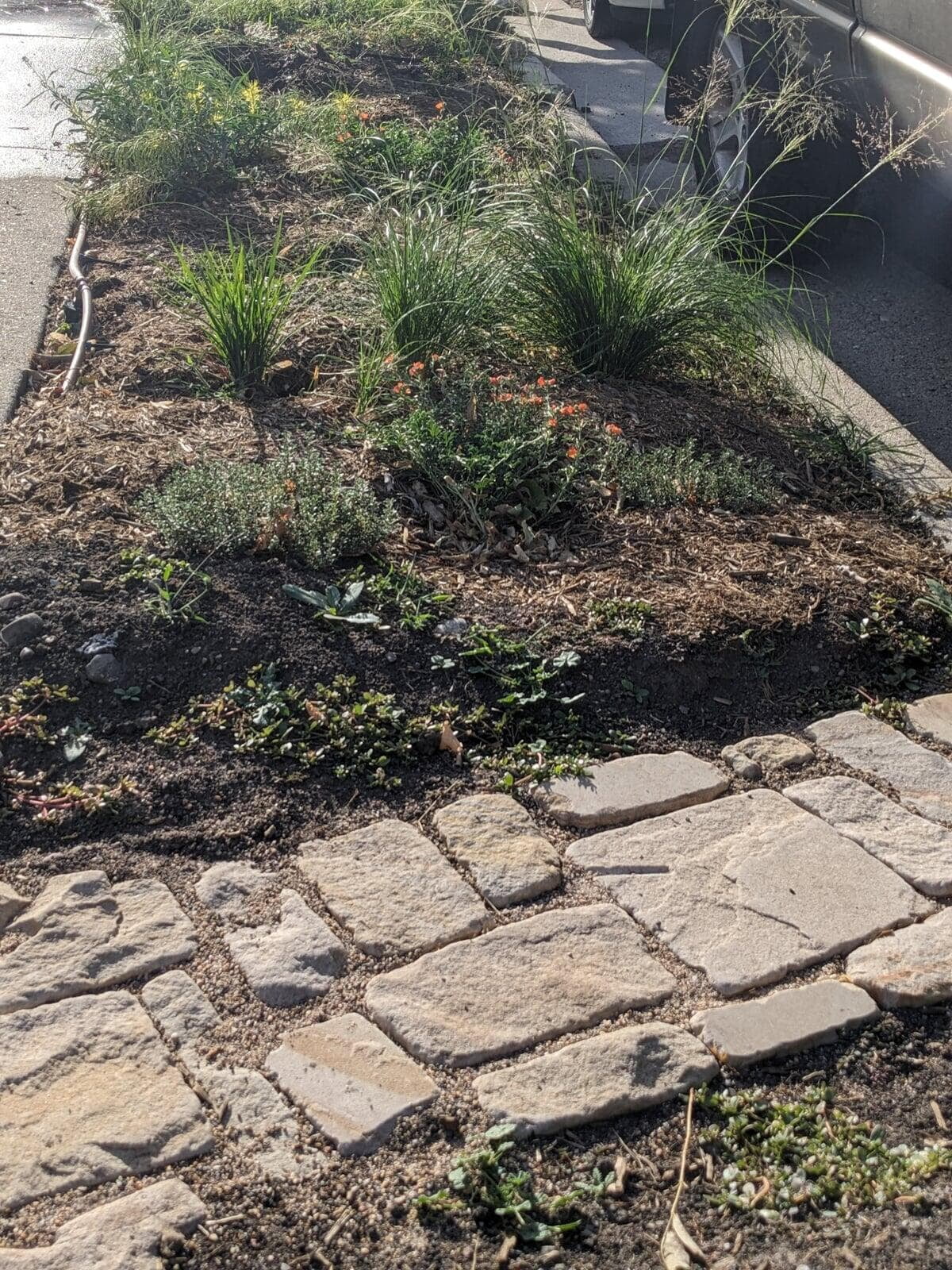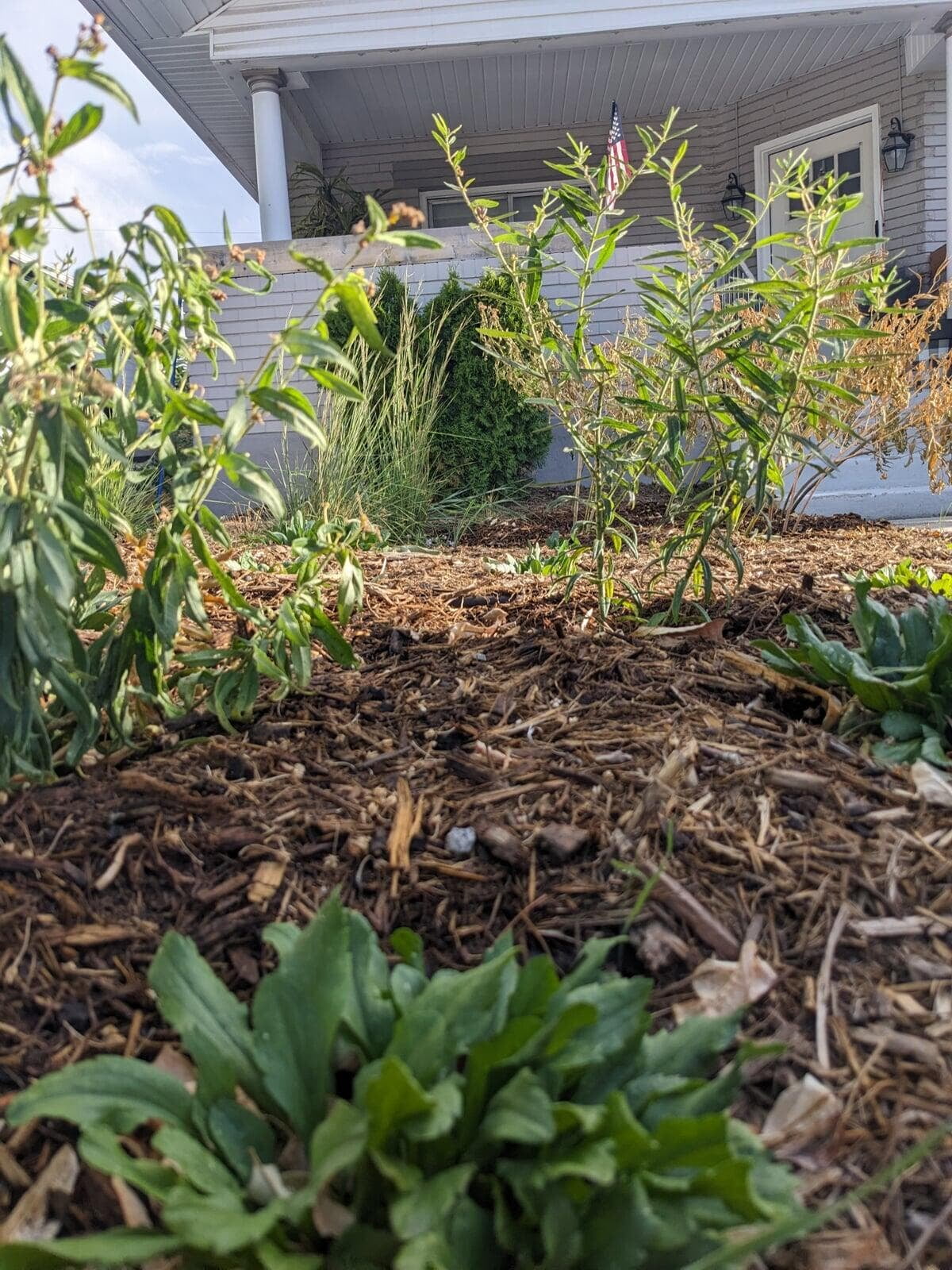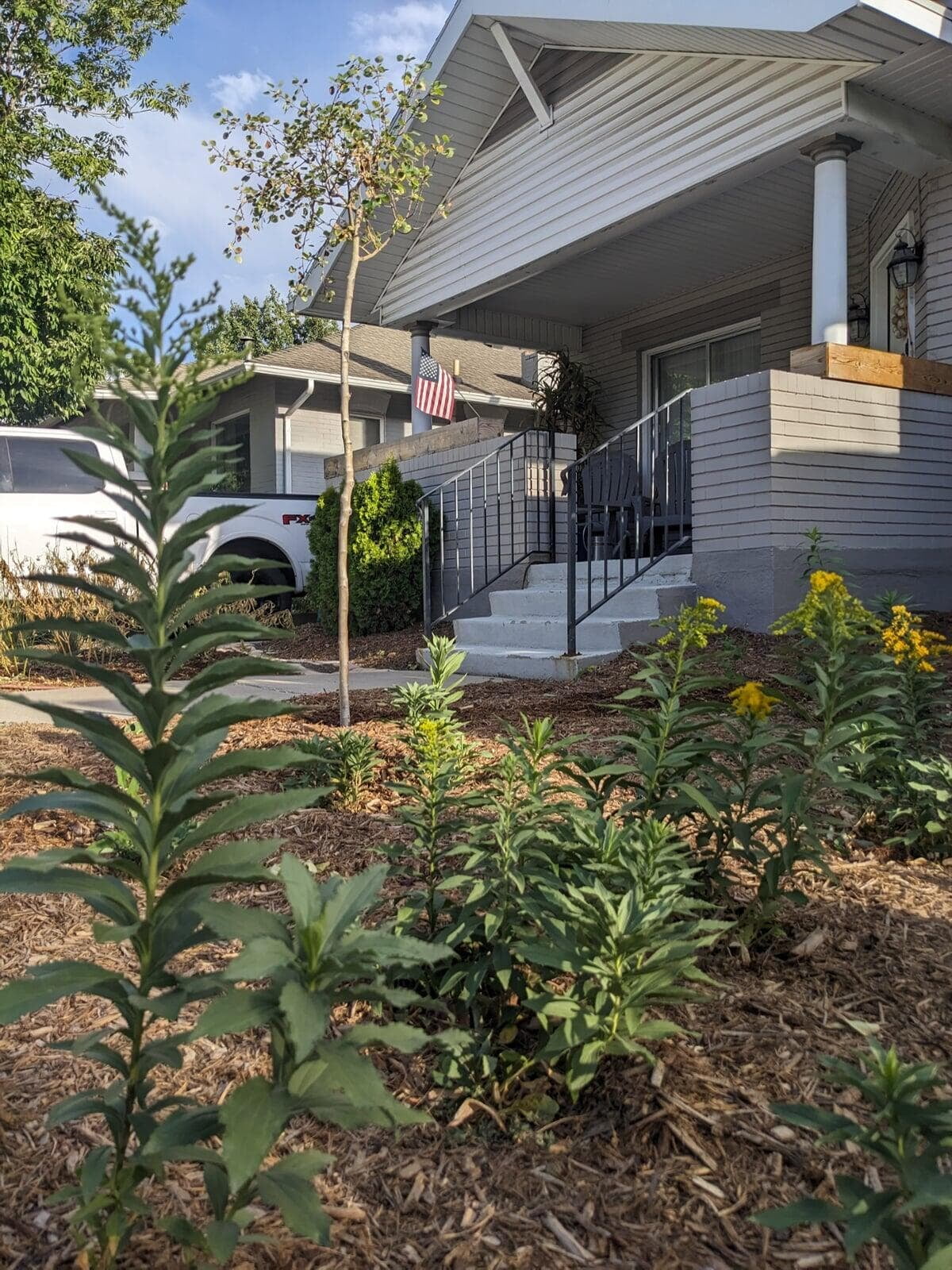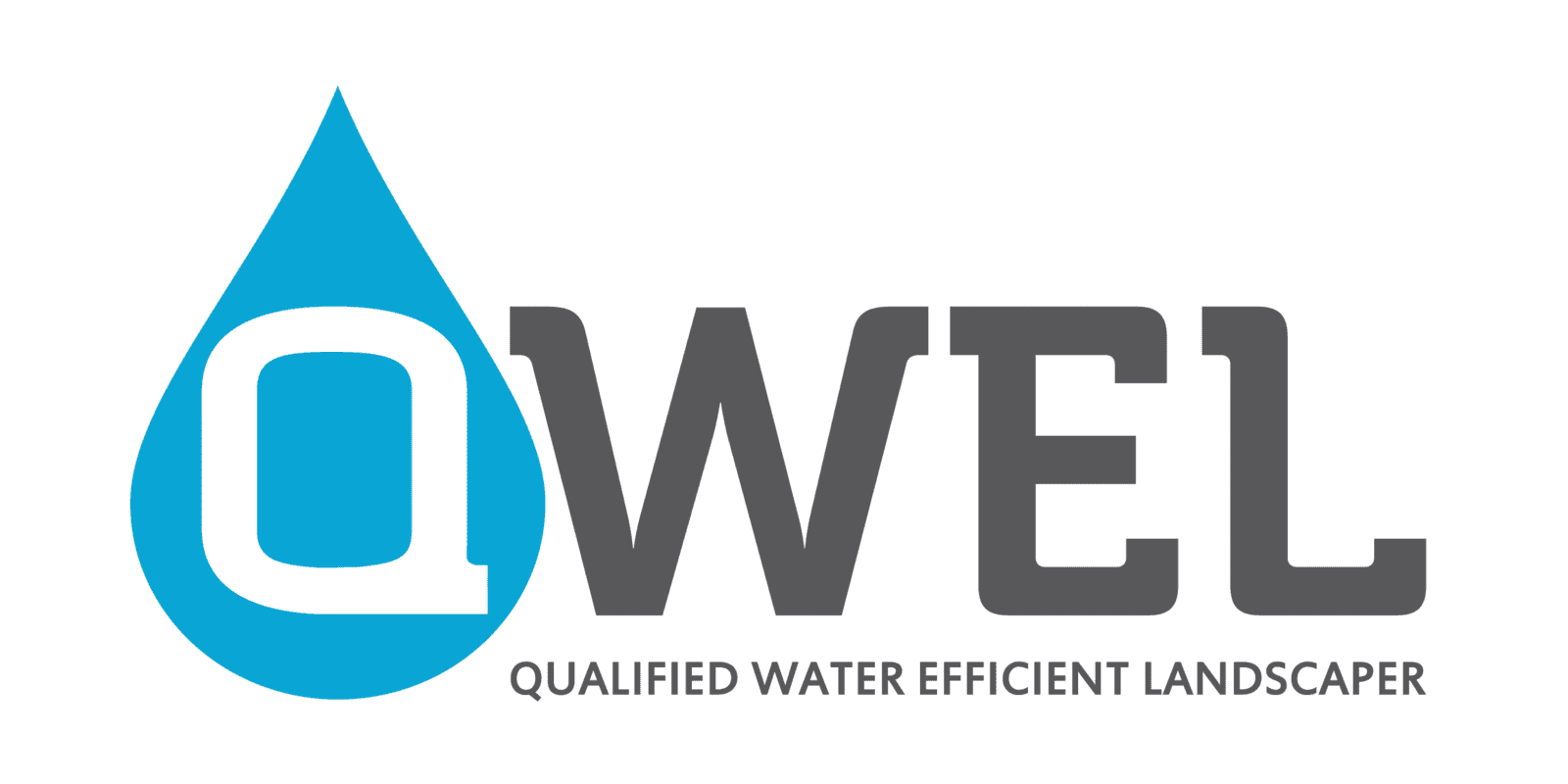Designs for wildlife
Honing Residence
| Area: | 180.5 m² |
| Budget: | 5-10K |
| Mature Plant Coverage: | 48% |
| Source Populations: (n ≥ 30) | 2 plant species |
| Features: | Stonework (1505 kg) |
| Native seed mix |
A significant number of the plants in this project survive without any supplemental irrigation. The space uses about 40 gallons per week, with 20 gallons used exclusively for 2 existing Eurasian ornamental trees (Betula platyphylla and Acer platanoides). Despite the tight water budget, no neighbor has complained about the lack of lawn. Rather, the design is complemented by those who stop to chat.
Mitcham Residence
| Area: | 75.9 m² |
| Budget: | 5-10K |
| Mature Plant Coverage: | 90% |
| Features: | Stonework (230 kg) |
| Drip irrigation |
Seed of native species (Onothera palida, Circum undulatum) were collected from nearby Dimple Dell park and grown to be transplanted into this project. The park-strip also needed to have a cubic meter of soil and sod removed so that it would capture rainwater from the sidewalk. When digging, we found that significant excess water from the neighbor's lawn was draining into the park strip, so our design changed to include facultative wetland species in the wettest locations.
Davis Residence
| Area: | 176.9 m² |
| Budget: | 5-10K |
| Mature Plant Coverage: | >90% |
| Source Populations: (n ≥ 30) | 2 |
| Features: | Drip irrigation |
| Earthworks | 1000 L rainwater cistern |
| Wooden retaining wall | Ephemeral pool with pump |
A significant number of the plants in this project survive without any supplemental irrigation. Despite the tight water budget, neighbors appreciate the yard over the numerous lawns in the area.
Kelty Residence
| Area: | 169.3 m² |
| Budget: | 10-20K |
| Mature Plant Coverage: | In evaluation |
| Source Populations: (n ≥ 30) | 2 Plant species |
| Features: | Stonework (1103 kg) |
| Drip irrigation | Earthworks |
| Invasive removal | Wooden retaining wall |
| Deer fencing |
Situated in a glacial moraine, experiencing significant herbivory, being very sloped, and with well established native and invasive species, this was a challenging project. There were two objectives: One was to eliminate erosion from a drain that was responsible for discharging 45,496 L of rainfall (12,020 gallons) annually. The second was to establish bird and native pollinator friendly zones.
We accomplished the first objective with a serpentine terrace that spread rainwater across a much larger area. The native pollinator zone was fenced off from deer for two seasons, a combination of native seed and young plants were used. For the bird friendly zone we used bare root trees and shrubs. Time is needed to evaluate the efficacy of this project on attracting new wildlife.
The Ryan Residence
| Area: | 71.44 m² |
| Budget: | 5-10K |
| Mature Plant Coverage: | >90% |
| Source Populations: (n ≥ 30) | 2 |
| Features: | stonework (377 kg) |
| Drip irrigation |
Plants were evaluated for their ability to act as host species for lepidoptera. After those we couldn't find in production were eliminated, We paired those with similar watering requirements into zones. Finally, we added nectar sources for generalist pollinators.
